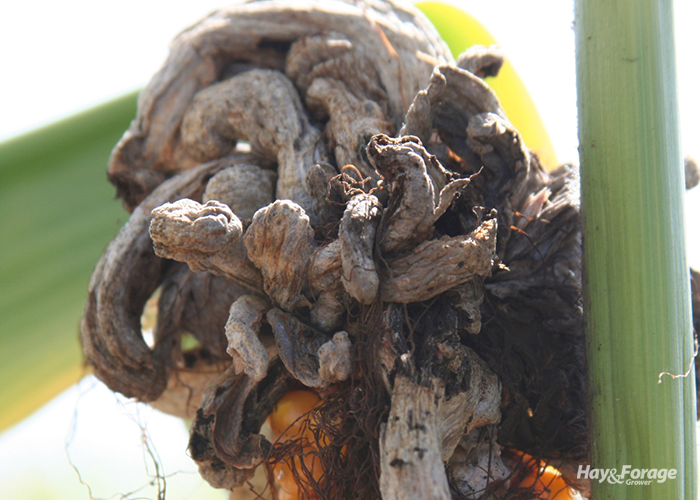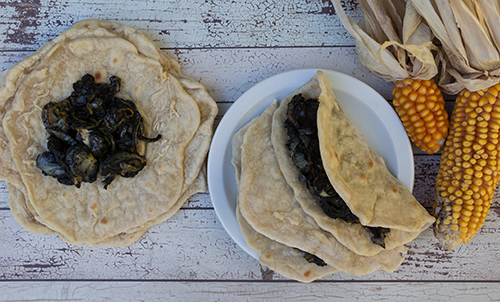Smut conquers the cornfield and dinner plate |
| By Mike Rankin, Senior Editor |
|
|
 Corn smut is like an old tattoo; it looks worse than it really is. Nevertheless, it still baffles the typical mind that something that looks so bad can actually cause inconsequential harm when fed to cows in silage or — get this — be considered a culinary delicacy by some humans. The corn smut fungus, Ustilago maydis, produces spores that survive in the soil or on crop residue for several years. When given a mechanism to enter the corn plant under favorable environmental conditions, the ear infection results in the growth of a large gray and black fungal mass. Sweet corn hybrids are more susceptible than field corn hybrids, but infections in field corn are still common given the right set of conditions. Those conditions include field flooding, hail, or some other physical damage that allows an avenue for the fungal spores to enter the plant. Corn smut can also be a problem in drought years when the wind or field traffic can stir up dust and fungal spores that enter the plant through the silks. After infection, the fungus causes plant cells to rapidly divide and expand, resulting in the characteristic large gray galls that fill with black spores. These spores are eventually spewed out over the plant tissues and soil. Upon seeing these galls at harvest, many farmers also spew out a variety of choice words. Fortunately, corn smut rarely causes significant yield reductions in field corn. In cases where yield reductions do occur, it’s usually the result of some other event: for example, a severe hail storm. Often, the question is asked whether or not corn smut impacts animal health or feed palatability when the crop is chopped for silage. Common corn smut doesn’t produce any toxins as some other corn molds are known to do. Most research feeding trials show little to no impact on animal health or palatability. Under extreme cases of greater than 50% infection, some trials indicate feed digestibility is reduced, but this level of infection would be rare in the northern U.S. There is little a farmer can do to control corn smut other than to plant hybrids with good genetic resistance. Some evidence exists that links higher fungal infection levels with excessive nitrogen fertility. Crop rotation has also proven beneficial, which is the case for many plant disease issues. There are no seed or foliar fungicides that control the disease. As for humans . . . Beyond the agronomics of corn smut, the fungus is also considered a highly sought after compliment to mashed potatoes on the dinner plate, especially in Mexico. Of course, it’s all about marketing, so the name corn smut is replaced with the more exotic sounding huitlacoche (weet-la-KO-chee) or Mexican truffle. My extensive research on this topic found that several higher end U.S. restaurants include corn smut on their menus. If you’re not up for an East or West coast eatery excursion, it can be ordered on the internet and delivered to your door for $1 to $2 per ounce or more. Canned corn smut, or huitlacoche, is considerably cheaper than the fresh frozen preparation. One vendor describes it as being “similar to mushrooms in texture and flavor, with an earthy, somewhat smoky taste.” Who can’t resist an “earthy” taste?  Corn smut tacos The ancient Mayans and Aztecs, who reportedly had a hand in starting this culinary tradition, called corn smut the “excrement of the gods.” Apparently, marketing wasn’t their strong suit. It is worthy to note that on Amazon, people who ordered huitlacoche also were interested in blindfolds, freestyle motocross, and Fear Factor: the first season DVD. A number of YouTube educational videos are also available for the smut-consuming connoisseur. |
